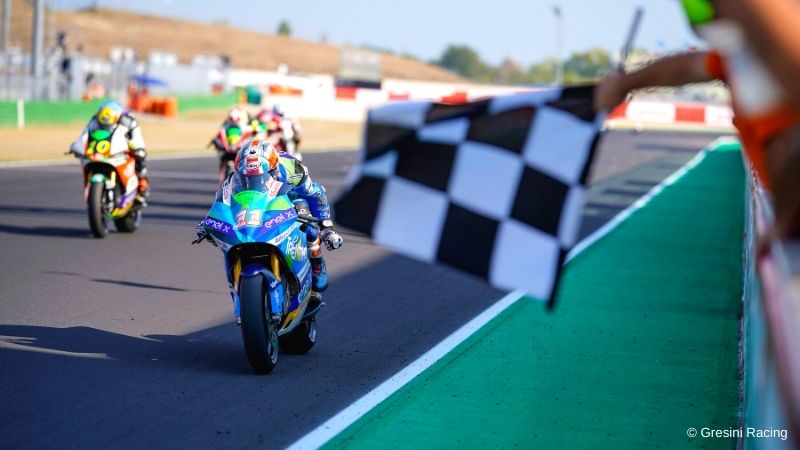
Matteo Ferrari at twenty-two became the first historic winner of the MotoE World Cup, the electric class of MotoGP. In his debut year, Ferrari won the two races in Italy, at Misano, completing all the races on the calendar without ever making mistakes. In the second edition of the MotoE, the rider from Rimini won twice again in the home grand prix but finished the championship in second place, behind the Spaniard Jordi Torres. Given his great availability, we decided to ask him some questions to better know his character as a rider and to reveal some unknown details of the MotoE. This is what he told us.
Matteo, what do you think about the 2020 season?
“For me being able to do all the races this year was fantastic. Dorna managed the 2020 season very well because they kept people and riders under control by doing tests and allowed us to race when many other sports were suspended. MotoE was hit by Covid less than the other categories because the programme was to race only in Europe. Indeed, we didn't keep to the original schedule, but we managed to do the number of races we had set ourselves using double rounds. As a rider, I would have preferred to do the same number of races, but it would have been more fun on more tracks. Besides, and this is true especially in MotoE, when you race on the same track in two consecutive weekends, you alter the result of the second race a lot because almost every rider manages to find the right set-up and the right feeling. In a normal championship, on the other hand, you also see who adapts first to a new track."
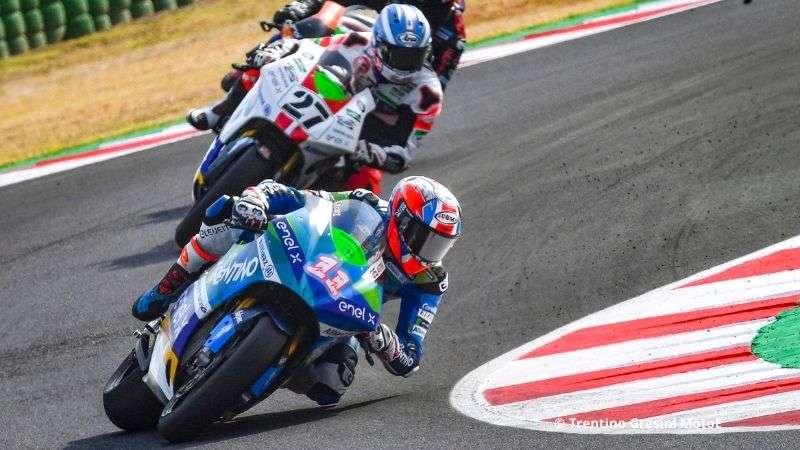
This year, you finished as runner-up despite two races in which you did not reach the finish line; how do you judge these two "zeros"?
“Well, last year I was very consistent, but if we look at the average points per race and consider only the races I finished, this year I had a higher average because I was always in the podium area except in the last race at Le Mans where I started fifteenth. This year's target was to score points in all races but above all to be as close to the podium as possible and raise my statistics. Let's say that I succeeded in this but only partially.
Having said that, the crash that hurts me the most is that of Jerez. At Le Mans, I made a mistake that can happen: first lap, cold tyres. It's certainly not an excuse, but it's a mistake that can occur over a season.
The fall at Jerez, on the other hand, didn't fit in because I could have fought for the podium easily or, at least, I could have finished fourth, and with those points, I could have managed the championship much more easily in the last round at Le Mans, like last year in Valencia.
But when you have to recover and have to stay in front, it's easier to make a mistake. Thinking about how the season went, the crash at Jerez burns me up, but it was my first crash in the MotoE race. When a rider wins, doing the same on the second year is the most challenging thing, so okay, in the end, we had a good result even if second place is not satisfying."
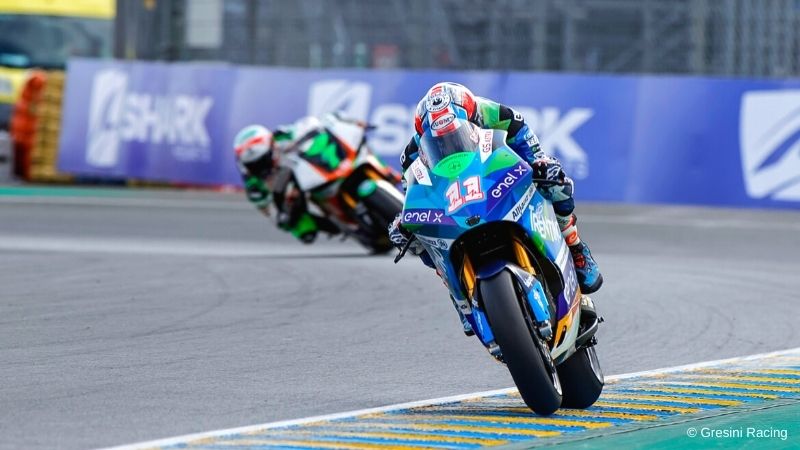
When you make such a mistake, how do you deal with it?
“Eh, it depends on the situation. For example, at Le Mans, where there was a race the day after, I move on and don't think about it anymore until the weekend is over. I looked at the telemetry with the team because it's important to understand what happened, but then the focus was straight to the race of the day after.
It was different in Jerez because we went back home after the race, and I had time to think about what had happened. Understanding why something went a certain way is fundamental because otherwise, you repeat the same mistake. Having understood what had gone wrong in Jerez then helped me during the season because in all the overtakings I did, I didn't make a similar mistake anymore."
What work do you do in a race weekend in the MotoE?
“The work you do in a MotoE weekend is very different from the other categories where you start in the first round with the bike with the standard set-up, and from there you start working: you review the track, see the conditions of the asphalt, try the different types of tyres available and so on. In MotoE, on the other hand, it's all very strange because there are no tyres to try because they are of a single type, and they are the same for everyone, just like the other components of the bike. Then in a thirty-minute practice, you can have about ten laps because of the battery's capacity, and it is crucial to understand what is the best time to hit the track."
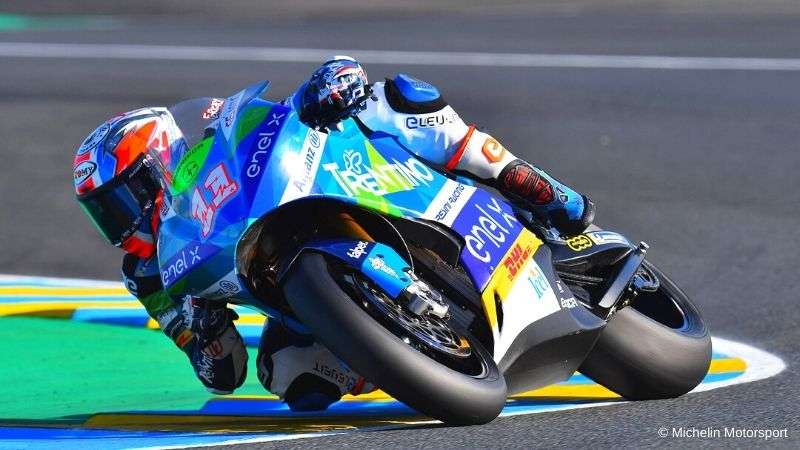
“For example, in FP1, I usually choose not to enter immediately because the track is not fast enough, and it makes no sense to enter immediately. For me, the most important element in MotoE is concentration, beyond the set-up and everything else you can work on in a limited way. I focus a lot on figuring out what the best solution is to ride that bike on that track: concentration is the key element. The rider's work in MotoE is very much focused on understanding the riding style you need to be effective with that bike on that track and in those conditions."
When you talk about riding style, there is something special with the MotoE that is different on traditional bikes?
“Well yes, for example with the MotoE the motor brake is very progressive because there is no gearbox and it is essential to use it properly to brake hard. This year with the bigger tyre, you could slide the rear more than last year under hard braking. But this meant that when the rear tyre started to slide, your mind reacts as it would with a conventional motorbike, where the sliding gradually decreases and allows you to ride the bike into the corner. With the MotoE, the motor brake is progressive and increases more and more during braking, so when the rear tyre starts to slide, you expect it to come back in, but the more the bike slows down, the more the motor brake increases and the more the rear tyre slides."
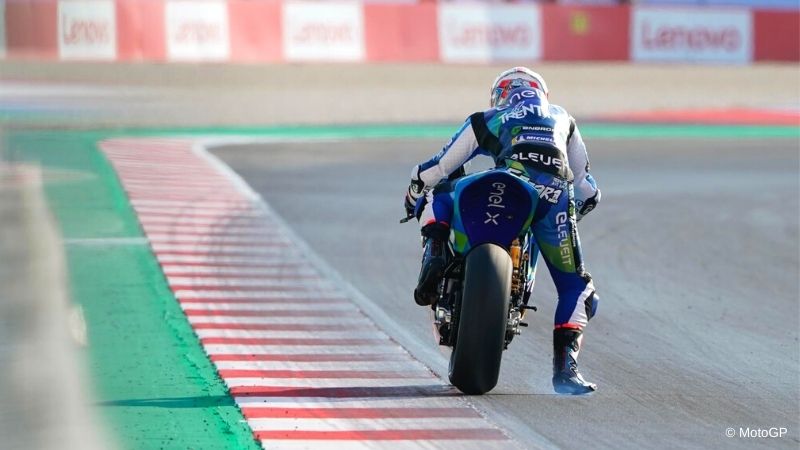
“That was the problem I had in the race in Jerez when I crashed at turn six. In that incident, the mistake was braking too hard, it’s strange saying it, and when the rear tyre started to slide, I could no longer recover it. If I had been able to keep the bike straight, the motor brake would have helped me but having started sliding sideways, the bike never recovered.
There is a countermeasure, but it isn't easy to put it into practice, and you have to be quick. Since there is no clutch as on normal bikes, the only thing you can do is turn the throttle. So while you're squeezing the brake lever with two fingers, you have to turn your wrist just enough to give a few throttle to speed up the rear tyre and make it stop slipping. This technique saved me from going wide or having a high-side when braking many times. Of course, it is not automatic because we all come from other categories where you use the clutch in similar cases. With these electric bikes, while you are hard braking trying to overtake another rider, you have to think about accelerating to keep the bike straight; it's no picnic!"
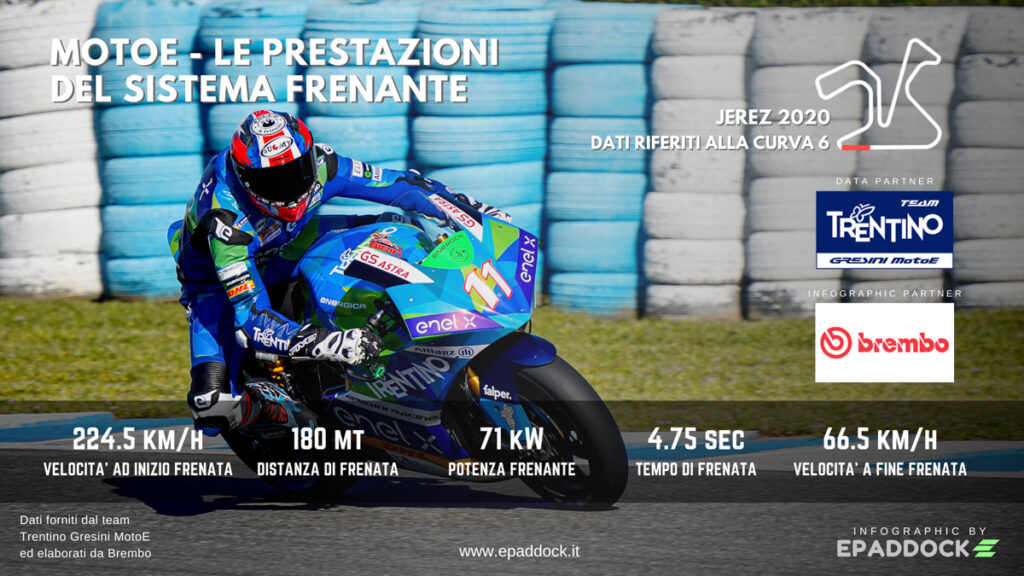
How do you manage the high motor torque when starting?
“Last year, we fully twisted the throttle. This year, and it seems nonsense, the bike does a wheelie even though it weighs 260kg. That's why we've introduced some shrewdness to have all the power we need to be in front at the first corner of the race. Last year I always lost positions at the start, so last winter I worked a lot on this part, and we studied a few things like, for example, the position of the body on the bike."
How do you rate this year's Michelin tyres?
“The rear tyre has improved a lot, as it is evident by the low number of high-side this year. Of course, there have been a few of them, but in those cases, the riders really exaggerated. Last year it was different because that tyre loose the grip very easily. In 2019 the tyre had a lot of grip, but you couldn't feel when it starts slippering and then it is too late. Without traction control, it was essential to get the bike up under acceleration with last year's tyres, as in MotoGP. But this year, the tyre had a very progressive sliding, which also helped us a lot to get the tyre up to temperature. We lost a little bit in agility, but it was a minor disadvantage."
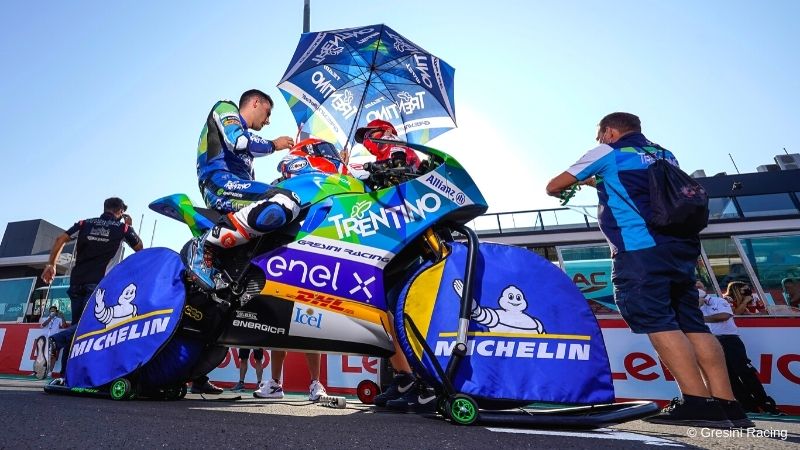
“The front tyre didn't work badly, but there was no way to test it enough because of last spring's lockdown. During the tests in March, we only managed to test it once in very mild temperatures, and at that time, almost everyone liked the tyre. Only then we used it in races with completely different weather conditions.
Since the 2019 front tyre had performed very well, I would have preferred to keep the old one as I couldn't test the new one enough. In fact, all the major crashes this year were due to the loss of the front end. Among other things, having improved the rear a lot, the bike was pushing a lot when accelerating, and it was causing the front tyre to lose grip, especially in the practices with the worn front. To help us, Michelin brought an extra front tyre for each rider from a certain point on of the season to always do all the practices with new tyres. It has been a problem caused by the lockdown; for sure next year, we will be able to do all six days of testing, and we will not have any problems."
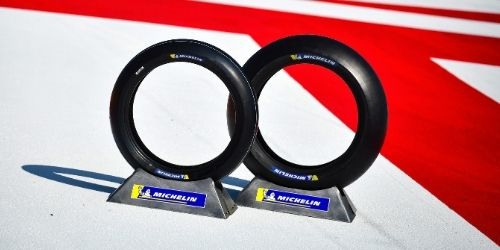
Analysis
The tyres of the MotoE World Cup
What about the front suspension?
“This year, Öhlins and Andreani's technicians have supplied us with a fork with new interior components. Almost all the riders liked it, but I didn't because I would have liked to keep the old one. In the new configuration, the suspension gave more support, but in my opinion, it needed more displacement to counteract the blockage of the front tyre during braking. This year the fork indeed reacted better in the very first phase of braking, but then there was always a lack of stroke. Together with the team's technicians, we found a combination of springs and preload to replicate the old fork's behaviour with which I felt better, and I used it all over the season. It's not that the new fork was bad, but the old fork was better suited to my riding style."
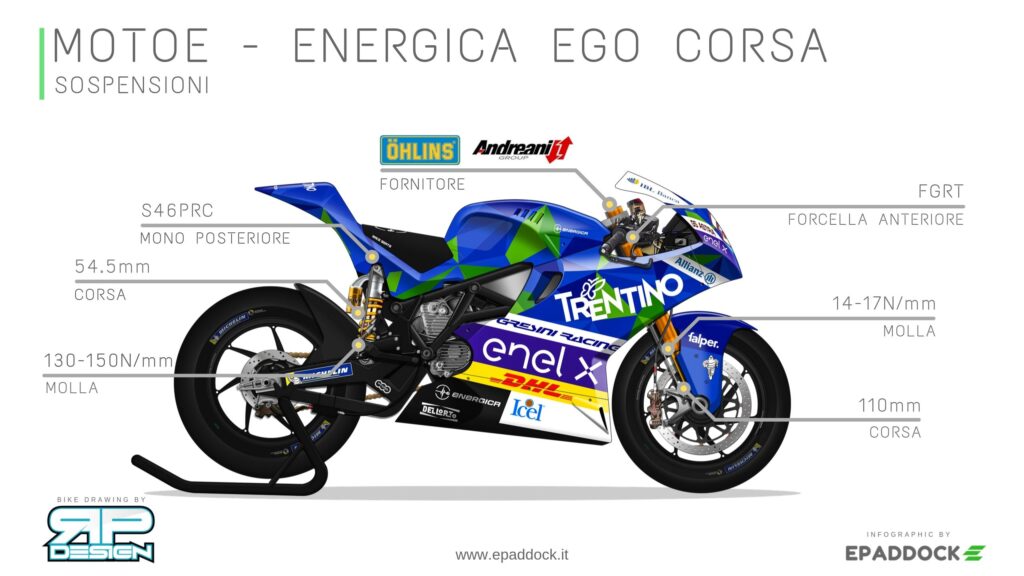
To be updated on MotoE World Cup, subscribe to Epaddock's Whatsapp broadcast and receive all our news on your mobile phone in real time: find out how here.














